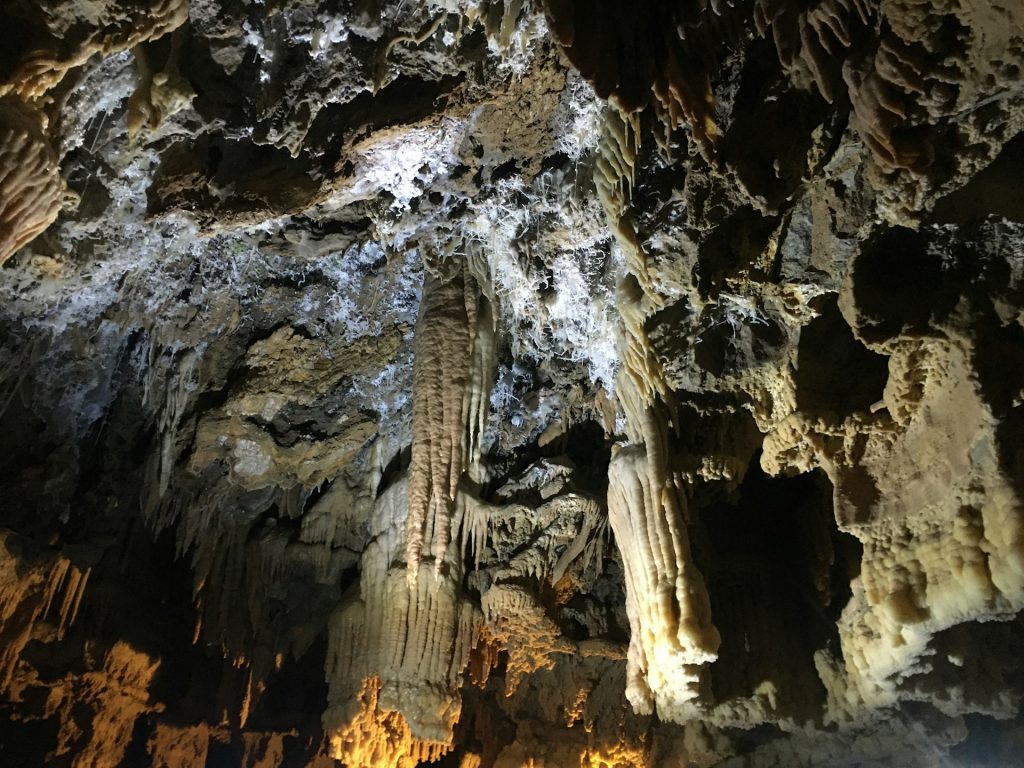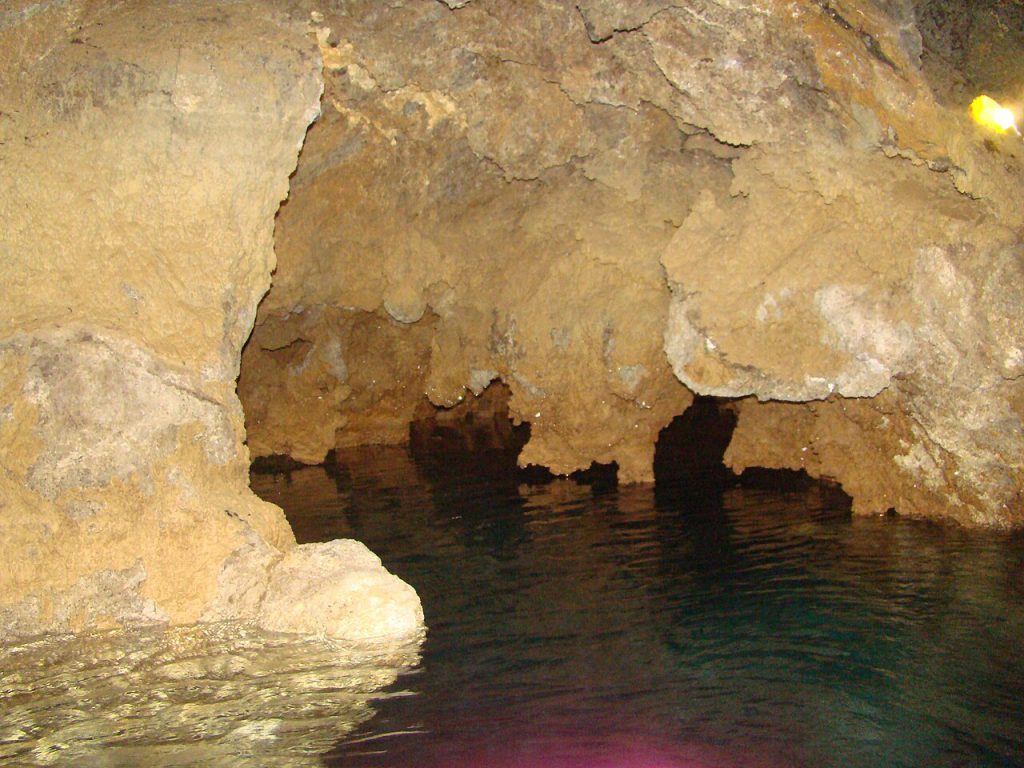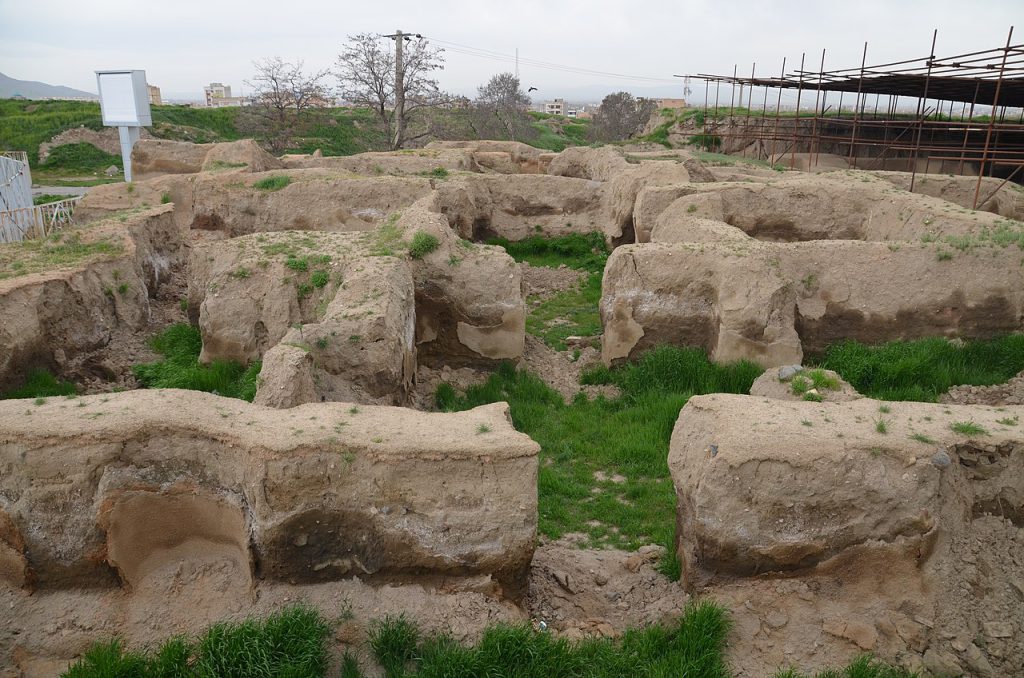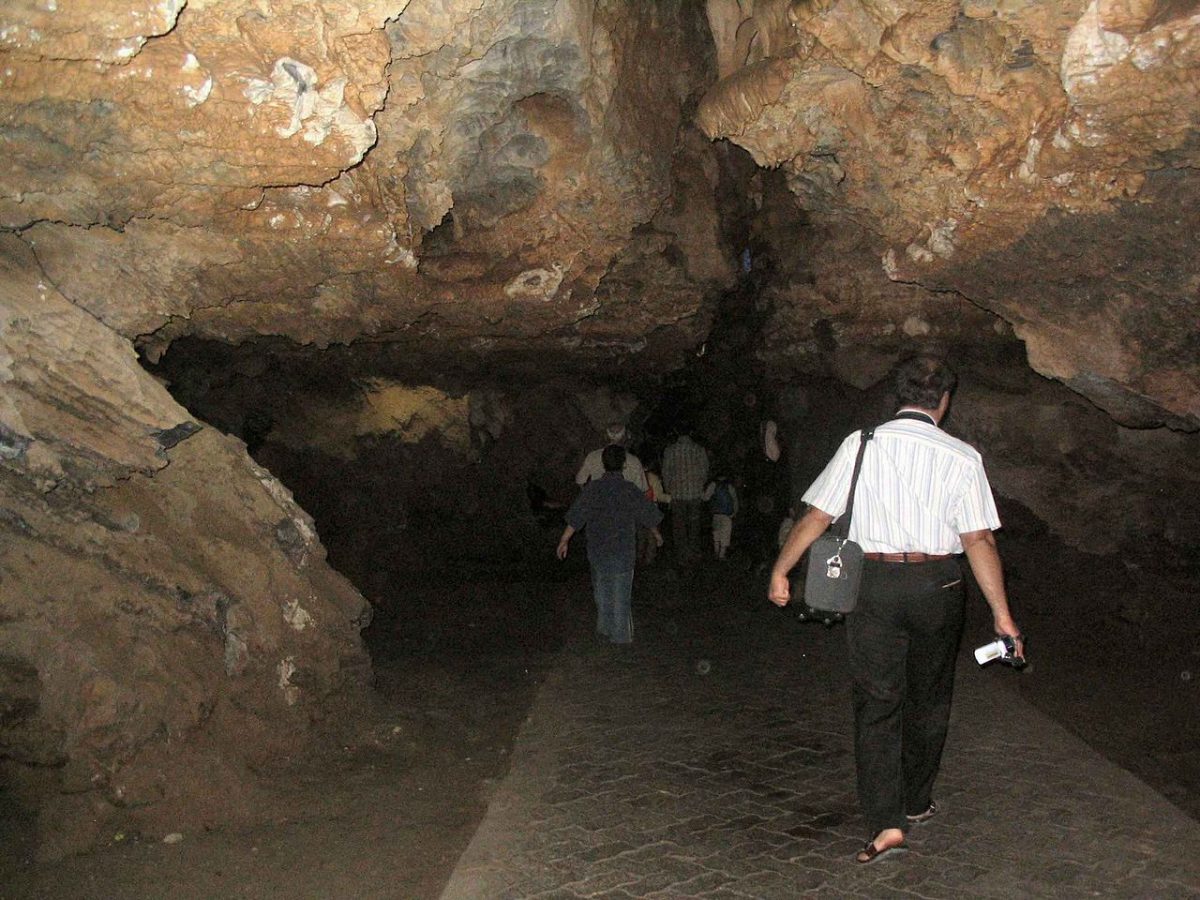Table of Contents
Located in the charming Ali Sadr village of Hamedan province, Ali Sadr Cave emerges as a remarkable natural wonder. As the only lagoon cave in Iran, it combines geological history with breathtaking beauty. Spanning vast lengths and originating from the Jurassic period, this cave offers a fascinating glimpse into a time long gone. Visitors are often astonished by its massive chambers and intricate formations, which showcase nature’s artistry.
What truly sets Ali Sadr Cave apart is its navigability. Unlike many other caves, adventurers can explore its enchanting waterways, gliding through serene lagoons surrounded by stunning stalactites and stalagmites. The experience of drifting along the crystal-clear waters while marveling at the cave’s natural sculptures creates a sense of wonder that resonates with every visitor. This captivating blend of history, beauty, and adventure makes Ali Sadr a must-visit destination for those eager to connect with the earth’s ancient past.
History of Ali Sadr Cave

At an impressive altitude of 1,980 meters in the majestic Zagros mountains, Ali Sadr Cave has a rich history that intertwines with the region’s cultural heritage. Its entrance was utilized by people during the Safavid era, which spanned from 1501 to 1763, hinting at the cave’s significance as a shelter or gathering place. This deep connection to the past adds a layer of intrigue, inviting visitors to imagine the lives of those who once sought refuge within its walls.
The modern discovery of Ali Sadr Cave came in 1962, thanks to a dedicated group of mountain climbers and spelunkers from Hamedan. Their exploration unveiled the cave’s hidden wonders, leading to a widening of the entrance in 1973 to facilitate access. By 1975, the cave opened its doors to the public, allowing adventurers and history enthusiasts alike to experience its enchanting beauty. Today, it stands not only as a geological marvel but also as a testament to the enduring legacy of human curiosity and exploration.
Structure of Ali Sadr Cave

The structure of Ali Sadr Cave unfolds through its labyrinthine corridors and expansive lake, a breathtaking combination of nature’s artistry and geological processes. Adventurers can navigate the cave’s numerous twists and turns, with a great lake formed by flowing streams that beckons exploration by boat. While the water appears pristine, its high calcareous salt content makes it unsuitable for drinking, adding a layer of intrigue to the cave’s aquatic features.
As visitors glide through this subterranean wonder, they are greeted by stunning formations overhead. The ceiling, soaring up to 10 meters in some areas, is adorned with pure calcium carbonate, interspersed with other minerals that lend a unique character to the space. On the cave’s floor, captivating sediment patterns emerge, showcasing nature’s creativity. Stalactites and stalagmites create an enchanting display, resembling strange creatures or abstract sculptures, further enhancing the cave’s allure. The clarity of the lake’s water allows for visibility up to 10 meters deep, inviting onlookers to appreciate the underwater beauty that lies beneath the surface.
Facts of Ali Sadr Cave

· Age: Estimated to be around 140 million years old, dating back to the Jurassic period.
· Length: Approximately 11,200 meters in total length, making it the longest water cave in the world.
· Accessible Area: About 2,400 meters of the cave is open for tourists to explore.
· Navigation: Visitors can navigate the cave’s enchanting corridors by boat, a unique feature among caves.
· Visibility: The clear waters allow for visibility up to 10 meters, revealing mesmerizing underwater landscapes.
· Geological Formations: The cave is home to various stalactites and stalagmites, many of which have whimsical names like Eagle’s Claw and Dragon’s Claw.
· Temperature: Maintains a stable temperature of around 12 degrees Celsius, providing a cool respite from outside heat.
· Unique Species: Hosts a unique species known as Ali-Sadr Niphargus, a type of amphipod, despite being devoid of other animal life.
· Cultural Significance: The cave’s breathtaking beauty and rich history make it a must-visit destination for travelers in Iran.
How to Get to Ali Sadr Cave
Reaching Ali Sadr Cave by car is a straightforward journey that offers scenic views along the way.
Start by driving along the Hamedan Road, heading towards Lalejin city. Once you arrive in Lalejin, simply take Bijar Road, and this route will lead you directly to the cave’s entrance, allowing you to soak in the beautiful landscape as you approach this natural wonder.
Alternatively, you can take a different but equally enjoyable route. Travel along Hamedan Road towards Kabudarahang, and just before entering the city, make a turn towards Nojeh Crossroad. This detour will guide you toward Ali Sadr Cave, providing a delightful drive filled with picturesque surroundings. Whichever route you choose, the journey to this captivating cave promises to be as memorable as the destination itself.
Working Hours of Ali Sadr Cave
Ali Sadr Cave welcomes visitors daily, but its operating hours vary depending on the season. From March 21 to September 21, the cave is open from 8 AM to 6 PM, allowing ample time for exploration during the warmer months when the natural beauty of the surroundings is at its peak.
Recommended Sightseeing Time of Ali Sadr Cave

The ideal time to visit Ali Sadr Cave is during the warmer months, particularly in spring and summer. The pleasant temperatures and longer daylight hours make this period perfect for exploring the cave’s winding waterways and stunning geological formations. As you glide through the crystal-clear waters in a boat, the vibrant atmosphere enhances the experience, making it truly unforgettable.
Where to Eat Near Ali Sadr Cave
Nouri Restaurant
After an exhilarating exploration of Ali Sadr Cave, visitors can indulge in a delightful culinary experience at Nouri Restaurant. Known for its warm atmosphere and authentic Persian cuisine, this eatery is a perfect spot to recharge after your adventures. The menu features a variety of traditional dishes, each crafted with fresh ingredients that reflect the rich culinary heritage of Iran. Whether you’re in the mood for succulent kebabs or flavorful stews, Nouri Restaurant promises a satisfying meal that will leave you eager for your next visit.
Bahar Restaurant
Just a short distance away, Bahar Restaurant stands out with its commitment to serving high-quality Mediterranean food made from scratch. This family-owned establishment prides itself on delivering exceptional service in a welcoming environment. Diners can enjoy a range of delectable dishes, from aromatic rice plates to mouthwatering grilled meats, all accompanied by freshly baked breads and delightful pastries. With its cozy ambiance and flavorful offerings, Bahar Restaurant is an ideal choice for those looking to savor the tastes of Persian cuisine after exploring the wonders of Ali Sadr Cave.
Where to Stay Near Ali Sadr Cave
Ali Sadr Tourist Hotel
For those eager to immerse themselves in the wonders of Ali Sadr Cave, a variety of accommodation options are available nearby. The Ali Sadr Tourist Hotel offers a blend of comfort and convenience, making it an excellent choice for travelers. Located just a stone’s throw from the cave entrance, this hotel features well-appointed rooms that provide a cozy retreat after a day of exploration. Guests can enjoy a range of amenities, including local cuisine served in the on-site restaurant, ensuring a delightful stay in this picturesque region.
Wooden Villas and Desert Tents
If you’re looking for something different, consider the charming wooden villas or desert tents that dot the landscape around the cave. These unique accommodations offer a more rustic experience, allowing visitors to connect with nature while enjoying modern comforts. The serene surroundings provide an ideal backdrop for relaxation, and many of these options come equipped with essential amenities to enhance your stay. For those seeking budget-friendly alternatives, local houses and residential suites within the village provide a cozy option when hotels are fully booked. With such diverse choices, staying near Ali Sadr Cave allows you to relax and recharge after a day of adventure in this captivating region of Iran.
Other Attractions Near Ali Sadr Cave

Nestled in the stunning landscape of Hamedan Province, the Ali Sadr Cave is just one of many remarkable sites that beckon adventurers and history enthusiasts alike.
Ecbatana
A mere stone’s throw away lies Ecbatana, the ancient capital of the Median Empire, where visitors can wander through the remnants of a civilization that dates back over 2,500 years. The archaeological site offers a glimpse into the past with its impressive ruins and artifacts, allowing explorers to connect with the rich history of Iran.
Mausoleum of Avicenna
Additionally, the Mausoleum of Avicenna, dedicated to the famed Persian polymath, is another must-visit. This beautifully designed structure not only honors Avicenna’s legacy but also provides a serene environment for reflection amidst lush gardens.
Abshine Lagoon
For those seeking natural beauty alongside historical intrigue, Abshine Lagoon is an idyllic spot located nearby. This tranquil body of water is surrounded by picturesque landscapes and offers opportunities for leisurely walks and picnics. The lagoon is particularly enchanting at sunset when the sky reflects off its calm waters, creating a breathtaking view that captivates all who visit.
FAQs about Ali Sadr Cave
Q1: Where is Ali Sadr Cave located?
A1: Ali Sadr Cave is located in the village of Ali Sadr in Hamedan Province, Iran.
Q2: What is the history of Ali Sadr Cave?
A2: Ali Sadr Cave was used during the Safavid era and was rediscovered by mountain climbers in 1962. It was opened to the public in 1975 after the entrance was widened.
Q3: How long is Ali Sadr Cave?
A3: The cave is about 11,200 meters long, with 2,400 meters accessible for tourists.
Q4: How can I get to Ali Sadr Cave?
A4: You can reach Ali Sadr Cave by driving through Lalejin city or Kabudarahang, both routes leading to the cave’s entrance.
Q5: What is the deepest cave in Iran?
A5: Porow Cave is a limestone cave located in the Zagros Mountains, north of Kermanshah in Western Iran. It is the deepest cave in Iran, with a depth of 751 meters. Joujar Cave is the second deepest, measuring 568 meters deep.
Last Words: Explore the Best of Ali Sadr Cave with a Customized Tour
Ali Sadr Cave, located in the lovely village of Ali Sadr in Hamedan province, is a unique natural site. It’s the only lagoon cave in Iran and combines geological history with stunning beauty. The cave is very long and dates back to the Jurassic period, giving visitors a peek into a distant time. Many are amazed by its large chambers and detailed formations, which show nature’s creativity.
If you’re planning a trip to Iran and want to experience the best of Ali Sadr Cave, consider embarking on a Customized tour. One excellent option for your journey is To Iran Tour, a professional tour company dedicated to creating unforgettable experiences in Iran. They specialize in Iran tours and travel packages that are designed to fit your unique preferences and desires. Whether you’re interested in the stunning natural landscapes or the rich cultural heritage of the region, To Iran Tour can craft a plan that meets your needs.
We’re here to help you have a fantastic experience in Iran. With Iran Tours from To Iran Tour, you can explore Ali Sadr Cave and beyond, ensuring that your trip is both memorable and tailored just for you.

